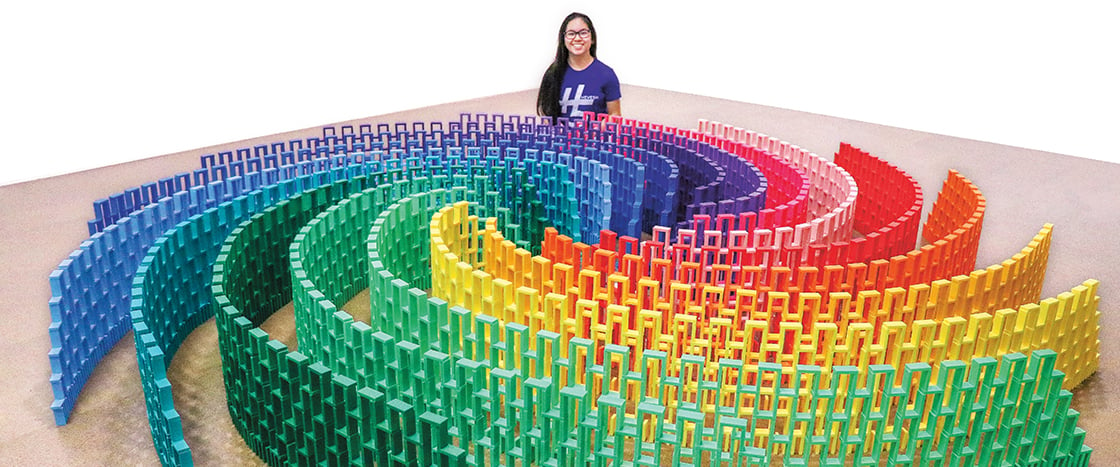Lily Hevesh fell in love with dominoes when she was 9 years old. “My grandparents had the classic 28-pack,” she says. Hevesh would arrange the tiny rectangles in curved or straight lines. Then she would flick the first domino and watch the whole display come tumbling down.
Hevesh collected her own dominoes as she got older. In 2009, she started posting online videos of her domino designs. Today, at age 20, Hevesh is a professional domino artist. She is paid to create spectacular domino setups for movies, TV shows, and events. Recently, she used more than 7,000 dominoes to build a design for pop star Katy Perry!
In 2017, Hevesh set a Guinness World Record for the most dominoes toppled in a circular shape: 76,017. “It’s super exciting to see your idea come to life—and then knock it down,” she says.
Lily Hevesh was 9 years old when she fell in love with dominoes. “My grandparents had the classic 28-pack,” she says. Hevesh would line up the tiny rectangles. Then she would flick the first domino. She’d watch as they all came tumbling down.
Hevesh started collecting her own dominoes. Then she began posting online videos of her domino displays. Today, Hevesh is 20 years old. She’s a professional domino artist. She’s paid to create amazing domino setups. She makes them for movies, TV shows, and events. Recently, she used more than 7,000 dominoes to build a design. It was for pop star Katy Perry!
Hevesh set a Guinness World Record in 2017. It was for the most dominoes toppled in a circular shape. The total number was 76,017. “It’s super exciting to see your idea come to life,” she says. “And then knock it down!”

